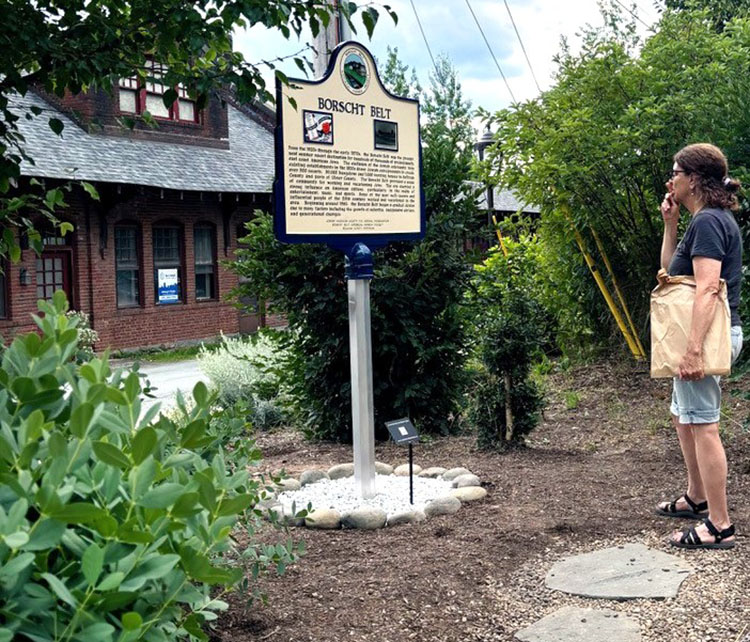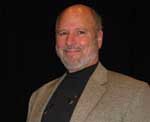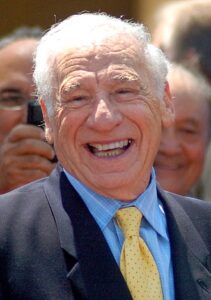
By Jerry Klinger

HURLEYVILLE, New York — You never heard of Hurleyville, N.Y.? Most people haven’t you say! A self-pache (Yiddish for a self-smack in the face.)
O.K., let me try something else.
You heard of Melvin James Kaminsky, yes, no? He’s a Yiddishe boychik, born June 28, 1926, in Williamsburg, N.Y. His family was very poor – I mean very poor. They were so poor they lived in a cold-water tenement of a fifth-floor walkup. Every window in their house looked out across to another tenement’s airshaft window… with someone staring back at you.
Still nothing? Yes, I know, every Jew in N.Y. claimed to have been poor and worked their way up. Melvin really was very, very poor. He was so poor, he was born on the kitchen tenement table – Oye!!!
So, who is Melvin Kaminsky?

Melvin changed his name to make it in the entertainment industry. He was always a jokester, even as a kid. Melvin was never very tall, being only 5’ 5”, not counting his socks with the big holes in them from when his older three brothers wore them.
Melvin is 98 years old today, a giant who shaped the world of modern American humor. Melvin changed his name to be more comfortably Americanized – Mel Brooks.
Mel Brooks cut his comedic teeth in Hurleyville, the Borscht Belt, the Yiddish Alps, the Kosher Mechia, the KatzKills (Catskills), 90 Miles northwest of New York City in Solomon (Sullivan) County.
For many Jews, who only knew the concrete gray of the city, it was hard to believe they could vacation for a few weeks where being a Jew was no big deal, and trees and fresh air co-existed.
The Borscht Belt Historical Marker Project was founded in 2022 by Marisa Scheinfeld, a noted Borscht Belt historical photographer, author, and Borscht Belt documentarian.
Scheinfeld photographed the detritus of the former Borscht Belt hotels, bungalows, and kuche-aliens (boarding houses) where she had grown up. She recognized the complete absence of any historical interpretive roadside markers documenting the bygone era that had culturally shaped America.
Securing funding and advisory support from the Jewish American Society for Historic Preservation, she decided to act when no one else would.
Scheinfeld initiated a unique program to place 20 vertical interpretive highway markers strategically sited to tell the story of the Borscht Belt.
To date, the program has completed and sited nine markers in Sullivan County – Monticello, Mountain Dale, Swan Lake, Fallsburg, Kiamisha Lake, South Fallsburg, Hurleyville, Bethel, and Woodridge. Five more are planned for 2025, and a final six in 2026.
All the markers have a standardized introduction to the Borscht Belt on side 1:
“From the 1920s through the early 1970s, the Borscht Belt was the preeminent summer resort destination for hundreds of thousands of predominantly East Coast American Jews. The exclusion of the Jewish community Borscht Belt from existing establishments in the 1920s drove Jewish entrepreneurs to create over 500 resorts, 50,000 bungalows, and 1,000 rooming houses in Sullivan County and parts of Ulster County. The Borscht Belt provided a sense of community for working and vacationing Jews. The era exerted a strong influence on American culture, particularly in the realm of entertainment, music, and sports. Some of the most well-known and influential people of the 20th century worked and vacationed in the areas. Beginning around 1960, the Borscht Belt began a gradual demise due to many factors, including the growth of suburbia, inexpensive airfare, and generational changes.”
Side 2 of the markers is specific to each location. Hurleyville was dedicated on July 21.
The text reads:
“I was there in the glory days of The Catskills and the audiences were tough and demanding. They really sharpened your act. It was do or die. No Borscht Belt, no Mel Brooks.’ — Mel Brooks
During Sullivan County’s Silver Age (1890-1915), Hurleyville was home to nine farmhouses that welcomed summer boarders. In the time of Sullivan County’s Golden Age (1940-1965), also known as the Borscht Belt era, Hurleyville had about 32 hotels and 20 bungalow colonies.
The Columbia Hotel, built in 1891, was the largest hotel in Hurleyville, located on a hillside overlooking the town. The Columbia was the oldest continually operating hotel in the county when it closed in 1969.
Other hotels were the Butler Lodge, Grand View, Majestic, Kramers, and The Morningside. American comedian, director, and producer Mel Brooks began his career at Butler Lodge as a teenager in the summer of 1941.
*
Brooks was not the only young Jewish comedic talent who developed his trade in the Catskills. The numbers go to the hundreds. Their humor was characterized by stereotypical Jewish traits, self-deprecation, insults, complaints, marital bickering, hypochondria, and wordplay with a liberal use of Yiddish that would flow into American colloquial usage.
Most did not appear in Hurleyville. But another famous name, who became Mel Brooks’s mentor, did. He, too, became an iconic American actor, performer, and beloved comic. He was just four years older than Mel, Sid Ceasar.
Over the years, millions of Americans came to love Brooks and Ceasar.
One of Brook’s jobs at the Butler, and he had worked his way up to it, was as a tummler. He was the entertainment director, court jester, and guy responsible for making everyone smile.
He did a daily sight gag routine. When he first did it, he thought it was curtains, not in the good sense.
Brooks tells about it.
“I walk out on the diving board wearing a black derby and a big black alpaca overcoat. I’m carrying two suitcases filled with rocks. ‘Business is terrible!’ I yell. ‘I can’t go on!’ And I jump in the pool. Big laughs — the Jews love it. But I don’t laugh — because the suitcases weigh a ton and like a shot I go to the bottom. The overcoat soaks up 20 gallons of water instantly. I run out of air, but I can’t lift the suitcases – and I can’t leave them in the water. They’re made of cardboard, in two minutes they’ll dissolve, and I need them for tomorrow’s act. God bless Oliver, that big goy! He was the lifeguard — Jews don’t swim, remember? And every day he’d do a little swan dive and haul me up.”
The Borscht Belt may never come back to what it was, but there is a pleasant revival of life there today.
The rest of the story is commentary – go out and have fun…in the Borscht Belt.
*
Jerry Klinger is the President of the Jewish American Society for Historic Preservation.